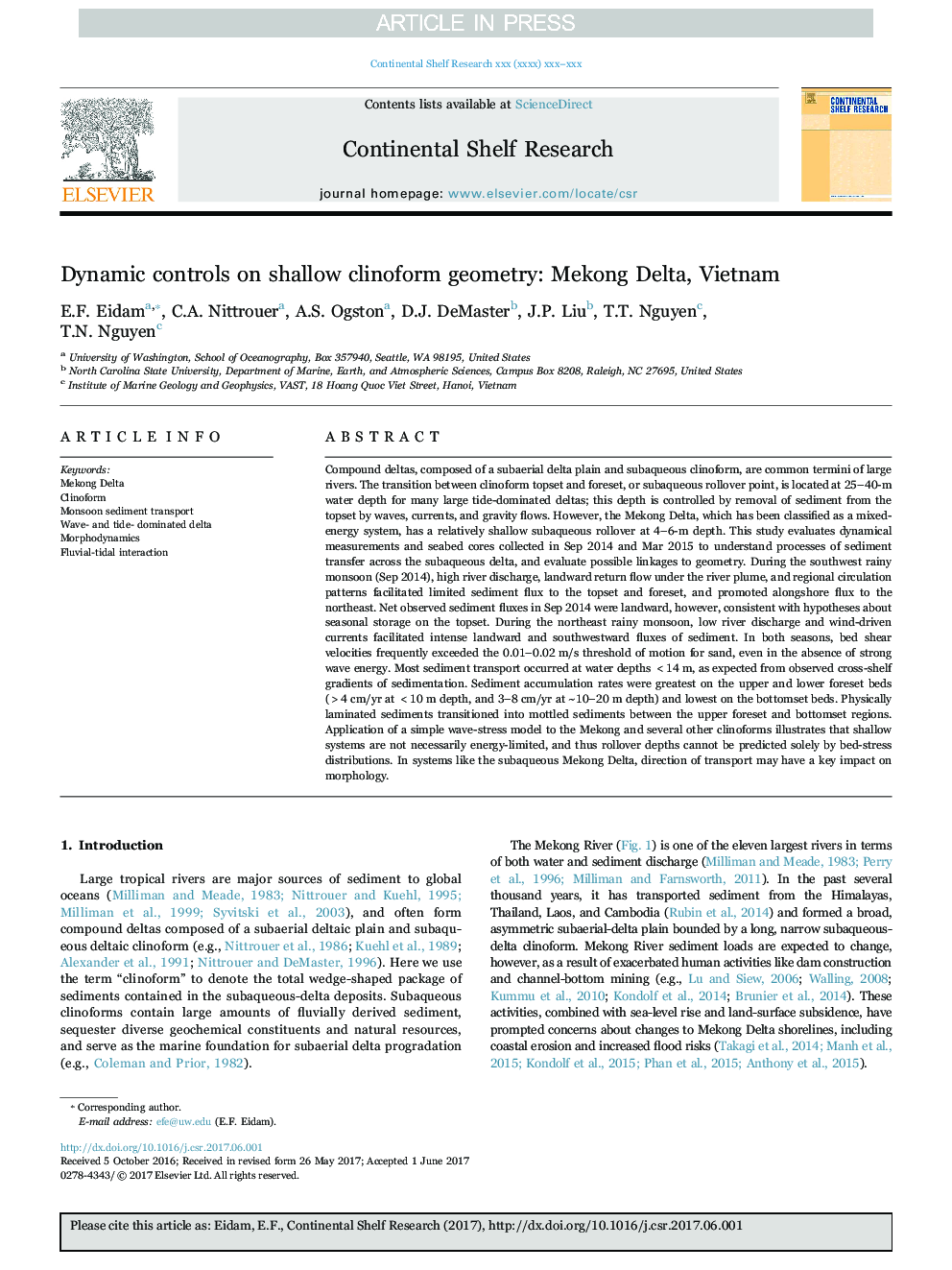| کد مقاله | کد نشریه | سال انتشار | مقاله انگلیسی | نسخه تمام متن |
|---|---|---|---|---|
| 5764373 | 1626066 | 2017 | 17 صفحه PDF | دانلود رایگان |
عنوان انگلیسی مقاله ISI
Dynamic controls on shallow clinoform geometry: Mekong Delta, Vietnam
دانلود مقاله + سفارش ترجمه
دانلود مقاله ISI انگلیسی
رایگان برای ایرانیان
موضوعات مرتبط
مهندسی و علوم پایه
علوم زمین و سیارات
زمین شناسی
پیش نمایش صفحه اول مقاله

چکیده انگلیسی
Compound deltas, composed of a subaerial delta plain and subaqueous clinoform, are common termini of large rivers. The transition between clinoform topset and foreset, or subaqueous rollover point, is located at 25-40-m water depth for many large tide-dominated deltas; this depth is controlled by removal of sediment from the topset by waves, currents, and gravity flows. However, the Mekong Delta, which has been classified as a mixed-energy system, has a relatively shallow subaqueous rollover at 4-6-m depth. This study evaluates dynamical measurements and seabed cores collected in Sep 2014 and Mar 2015 to understand processes of sediment transfer across the subaqueous delta, and evaluate possible linkages to geometry. During the southwest rainy monsoon (Sep 2014), high river discharge, landward return flow under the river plume, and regional circulation patterns facilitated limited sediment flux to the topset and foreset, and promoted alongshore flux to the northeast. Net observed sediment fluxes in Sep 2014 were landward, however, consistent with hypotheses about seasonal storage on the topset. During the northeast rainy monsoon, low river discharge and wind-driven currents facilitated intense landward and southwestward fluxes of sediment. In both seasons, bed shear velocities frequently exceeded the 0.01-0.02Â m/s threshold of motion for sand, even in the absence of strong wave energy. Most sediment transport occurred at water depths <14Â m, as expected from observed cross-shelf gradients of sedimentation. Sediment accumulation rates were highest on the upper and lower foreset beds (>4Â cm/yr at <10Â m depth, and 3-8Â cm/yr at ~10-20Â m depth) and lowest on the bottomset beds. Physically laminated sediments transitioned into mottled sediments between the upper foreset and bottomset regions. Application of a simple wave-stress model to the Mekong and several other clinoforms illustrates that shallow systems are not necessarily energy-limited, and thus rollover depths cannot be predicted solely by bed-stress distributions. In systems like the subaqueous Mekong Delta, direction of transport may have a key impact on morphology.
ناشر
Database: Elsevier - ScienceDirect (ساینس دایرکت)
Journal: Continental Shelf Research - Volume 147, 1 September 2017, Pages 165-181
Journal: Continental Shelf Research - Volume 147, 1 September 2017, Pages 165-181
نویسندگان
E.F. Eidam, C.A. Nittrouer, A.S. Ogston, D.J. DeMaster, J.P. Liu, T.T. Nguyen, T.N. Nguyen,